Last December I became a little obsessed with taking photographs of angels within walking distance of where I live in central Oxford. I am not a religious person, but there is something about these winged creatures that I find both beautiful and intriguing. I wanted to collect 24 of them, one for every day of Advent. What I discovered was that this wasn’t hard to do as there are hosts and choirs a plenty. They are all round the city, painted high up on ceilings, emerging out of stone buttresses, carved at the end of pews, back lit in stained glass, sewn on to banners. Once I started looking they flew at me from all directions, they were everywhere.
Wandering into Exeter College chapel I came across the depiction of ‘The Adoration of the Magi’ by the Pre-Raphaelite artists Edward Burne-Jones and William Morris on the tapestry that you see above. They had gifted the piece to their old college in 1890. Taking two years to complete, it is huge, completely filling the space to the right of the altar. Recently rehoused behind a new UV–protecting, non-reflective screen to show off its vibrant colours, it is magnificent. But what is interesting is that the central figure in the composition is not Mary or the Baby Jesus, but the Angel Gabriel. Gazing at this barefooted being (angels apparently never wear shoes) rising above the other figures, this is the familiar picture of the other-worldly celestial creature of our imaginations.
I’ve always considered angels to be male. After all, they come with names like Gabriel, Raphael and Michael, and are often dressed as war-like leaders of great armies. But this is not the case according to Peter Stamford who has written a book on the subject: ‘Angels: A History’.
‘Unlike Saints, Angels were never humans,’ he says. ‘They are made of light and are pure spirit, so are above gender and have no sexual bits.’
He suggests that the beautiful feminised versions we see so often in Christian iconography from the medieval period and beyond may have been created by groups of (supposedly) celibate men living together, as a of way channeling their frustrations. Might that be true of the angels we see in Oxford? Ever since the Dominicans set up a foundation here in the 13th century, the University that emerged was an institution where organised religion was practised in colleges made up entirely of groups of men. Right up until the late 19th century. Might angels have been their visualisation of the perfect woman? By the time Victorians like Burne-Jones were painting angels, they were certainly openly using women as their models.
Angels, Stamford tells me appear in many monotheistic religions, not just Christianity. Way back in the 7th century BC angels are found as part of the ancient Persian religion of Zoroastrianism. They are also later evident in the Jewish faith and amongst Muslims. What is common to them all is that angels are seen as intermediaries – ‘angel’ is Hebrew for ‘messenger’, ‘angelos’ Greek for the same. They were the only beings able to see and converse with God, and so carry communications between Heaven and Earth and back again. It was in this role that they were so important in the traditional Christmas story.
It is interesting that another Exeter College alumnus and Oxford inhabitant Philip Pullman also included angels in his epic trilogy, ‘His Dark Materials’. These are very different angels. Pullman was challenging organised religion and what has been done in its name. Though some of his angels still follow ‘The Authority’ as he calls it, in his books the ‘fallen angels’ are the goodies, born of a weariness with the dictates of the Church as an all powerful institution. They fight alongside witches and huge polar bears, standing for tolerance, open mindedness, and the idea that sexuality is something to be celebrated not denounced. A seemingly more popular idea in the modern western world.
Stamford wrote his book as a response to a survey done back in 2016 claiming that more people believed that they have a Guardian Angel than that there is a God. It seems that in today’s secular society we are all still just as in need of guidance as we ever have been, but we want it to be more customised to our own particular requirements. Where before God was the message, now angels have become the message, the go to for spiritual sustenance. Take the giant creation of Anthony Gormley, ‘The Angel of the North’, its huge wingspan reminiscent of the Persian ‘Farvahar’, meaning ‘personal spirit’, still the national symbol of Iran. A wood nearby has become a secret garden of memories, strewn with photographs, ribbons, and messages, a sort of pilgrimage site for those on personal journeys and especially for those searching for some comfort after lost loved ones. For them the Angel is their gateway to those who have passed to the next life.
We may not have an Angel of the North here in Oxford, but we have plenty of our own angels, with which to share our thoughts and help give us direction. You may find them in churches and chapels, and also in less obvious places if you use your imagination.
So go find yourself an Angel.
And I hope you have a very happy Christmas!
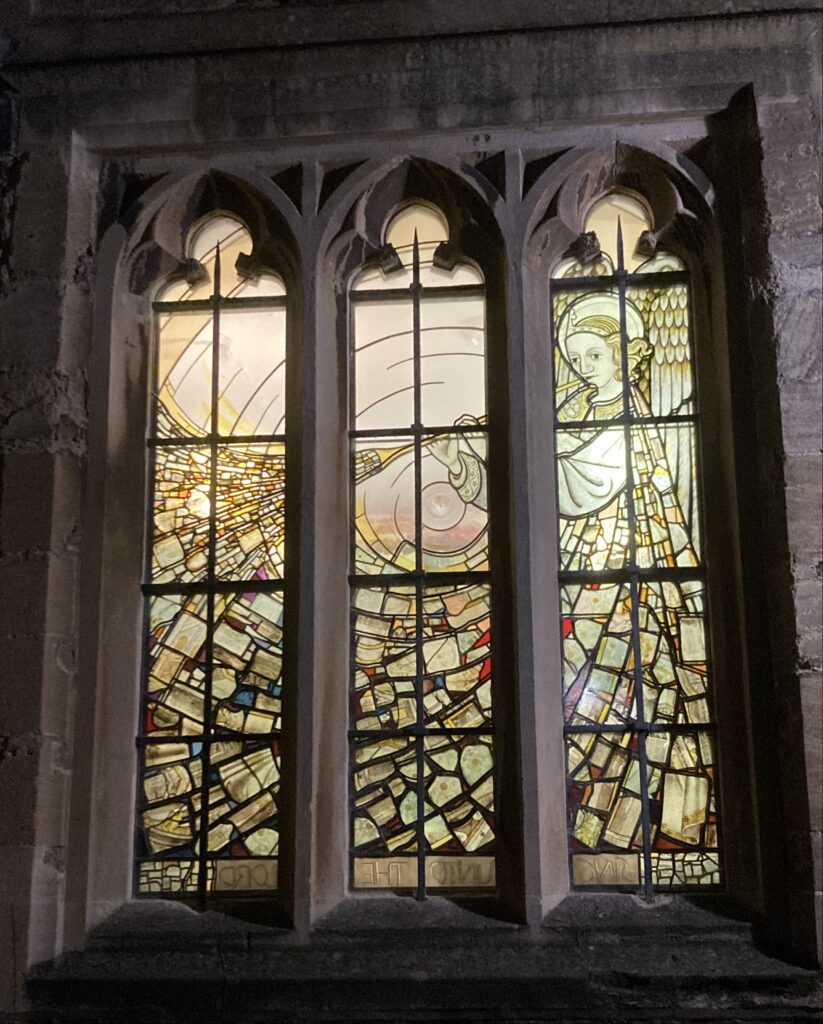
A window in New College, where the choristers gather before chapel.
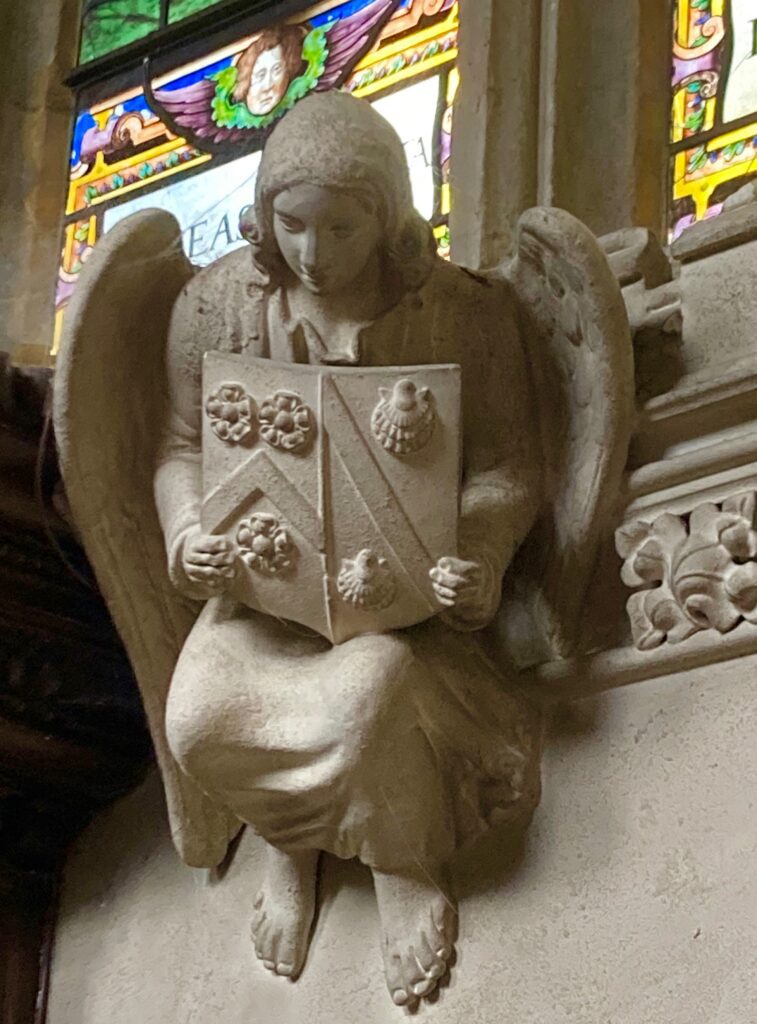
An angel looks down at the congregation at Wadham College.
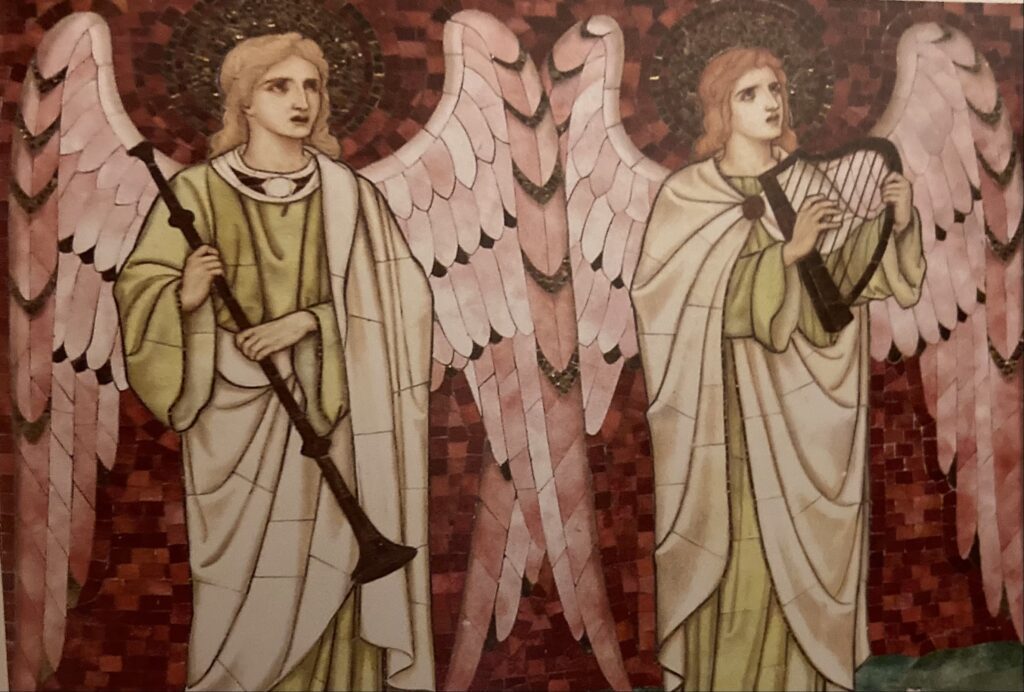
Musical mosaic angels from the Church of St Barnabas
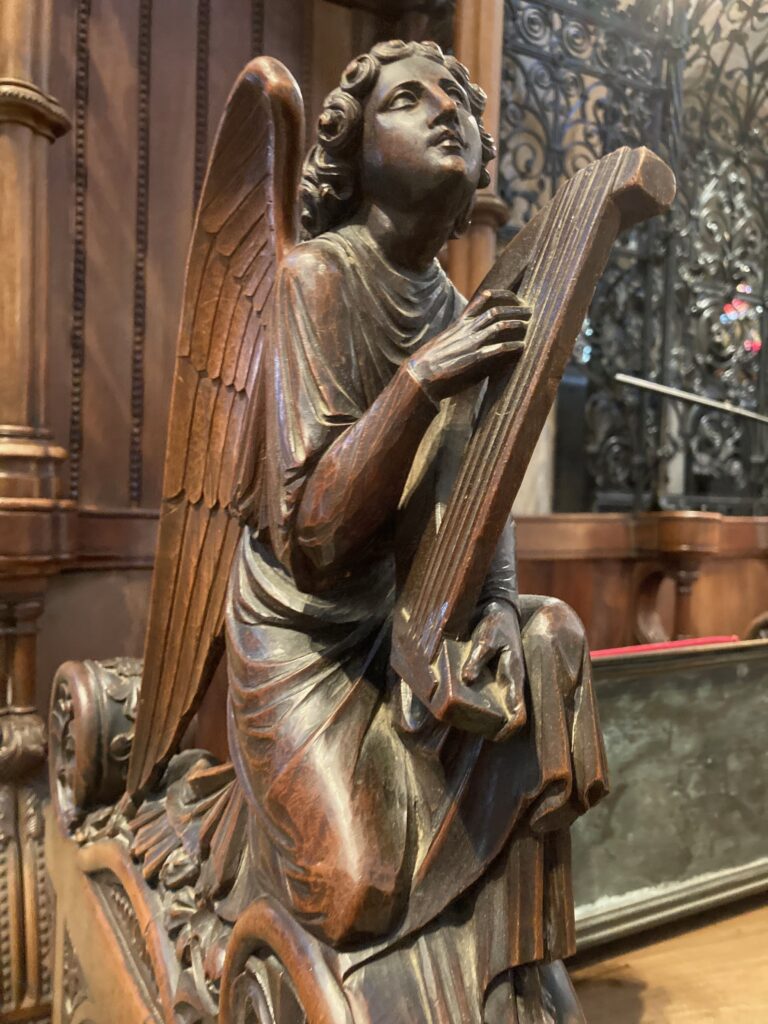
A wooden carving at the end of a pew at Christ Church Cathedral
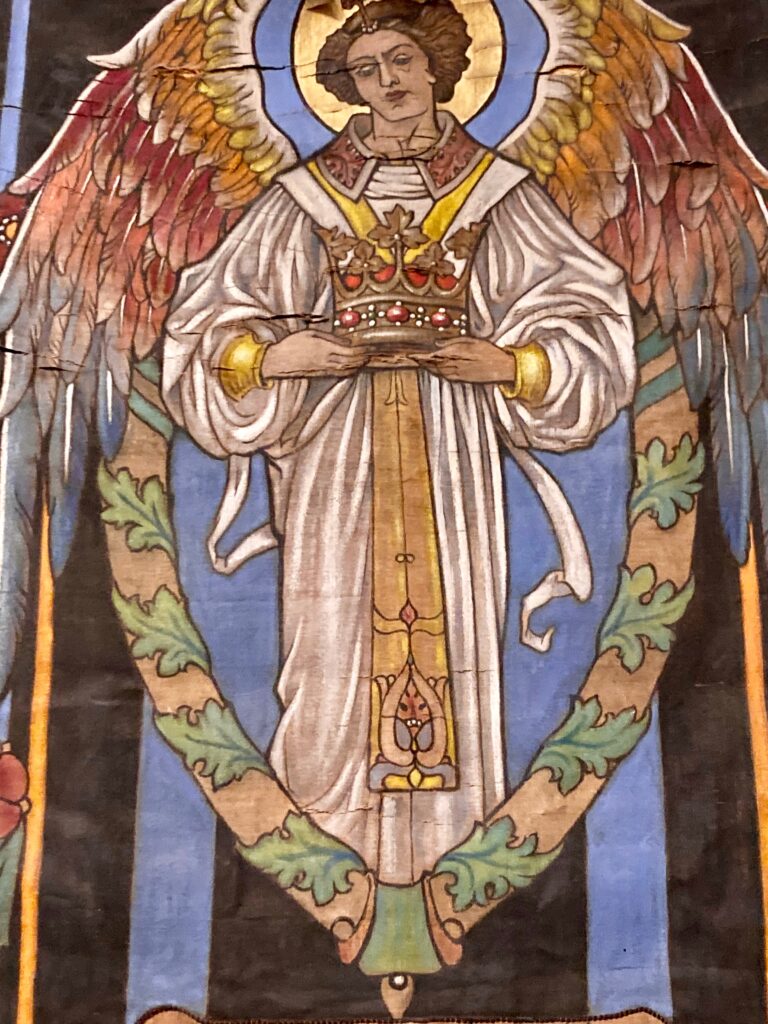
A banner from the Church of St Michael of the Northgate
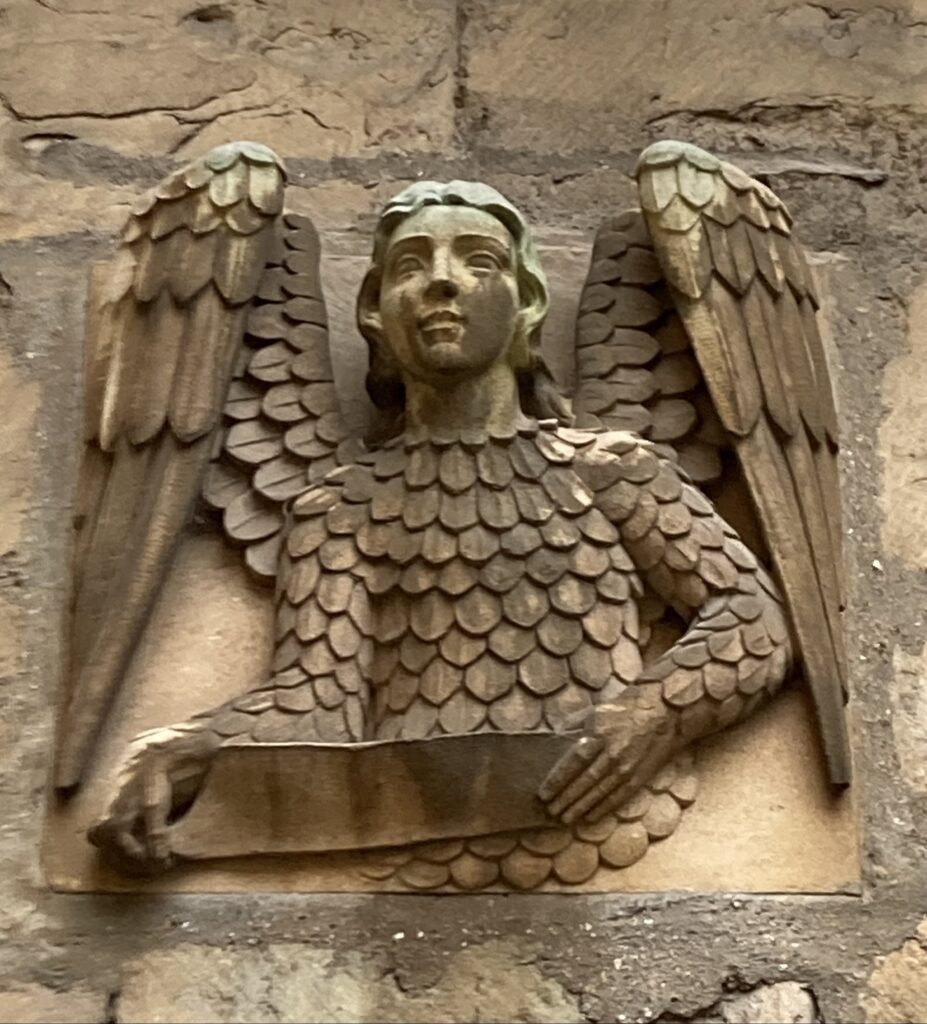
On the wall before entering the chapel at New College, an angel covered in feathers.
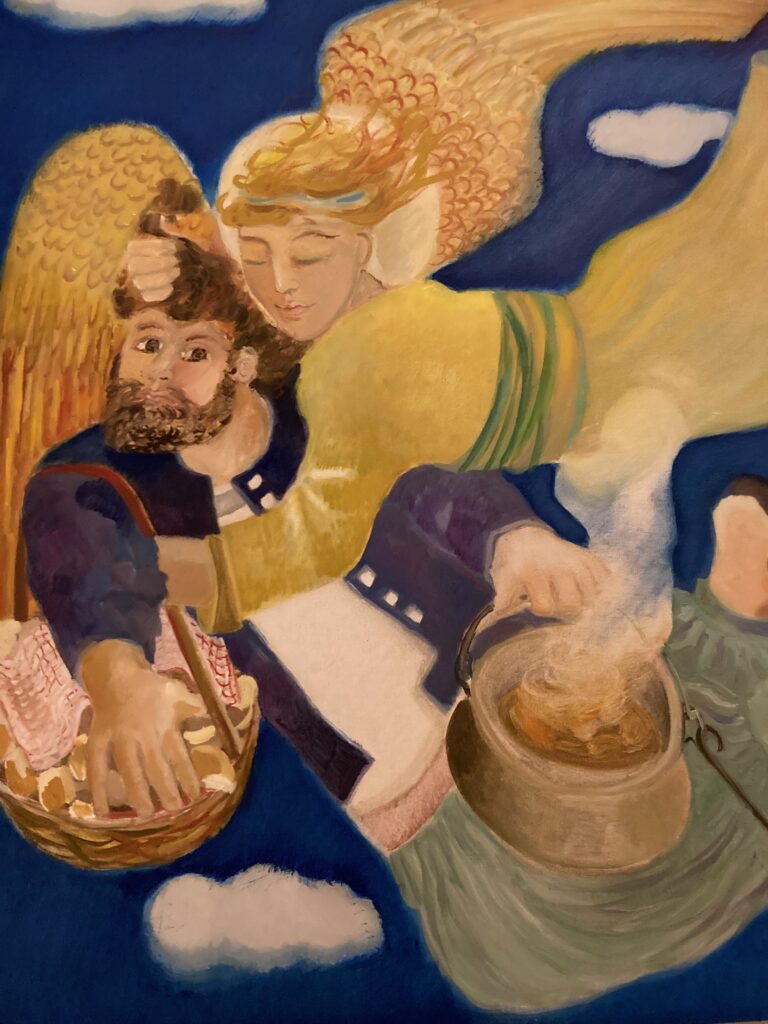
I am lucky to have this painting of Tobias and the Angel by Anthea Craigmyle on my walls.
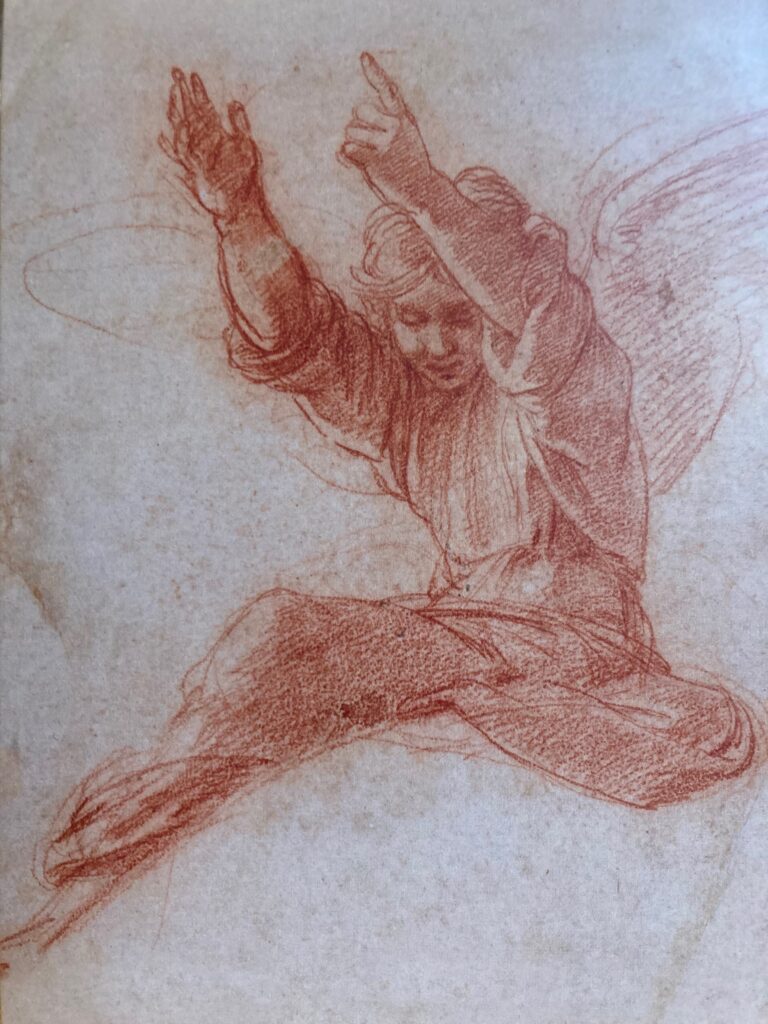
The Christmas card I send every year is this wonderful red chalk angel by the artist Raphael from the Ashmolean Museum collection. He drew it in preparation for a detail in the mosaic at the Chigi Chapel in the church of St Maria del Popolo in Rome. With the right arm pointing upwards to God, and his downward gaze towards humanity his angel implies a connection between Heaven and Earth.
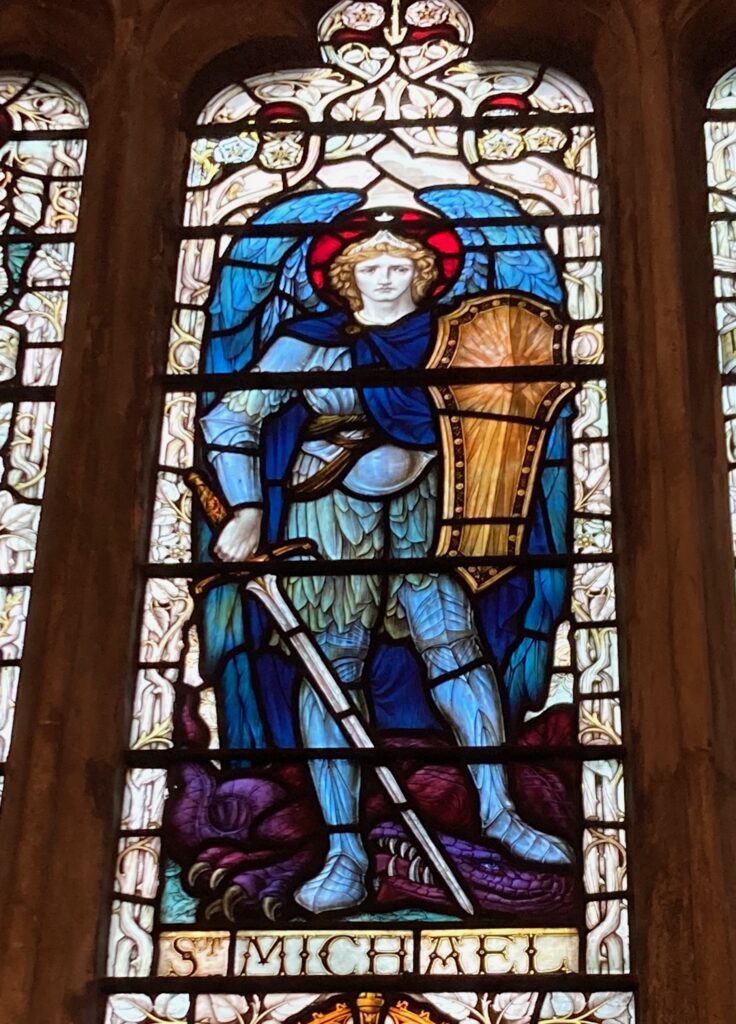
Michael the Archangel in the window of the Church of St Michael of the Northgate

Another Tobias and the Angel painting this time from The Ashmolean Museum collection by Altobello Melone from the 15th century. The angel is Raphael, is portrayed as a protector or guardian as they travel together.
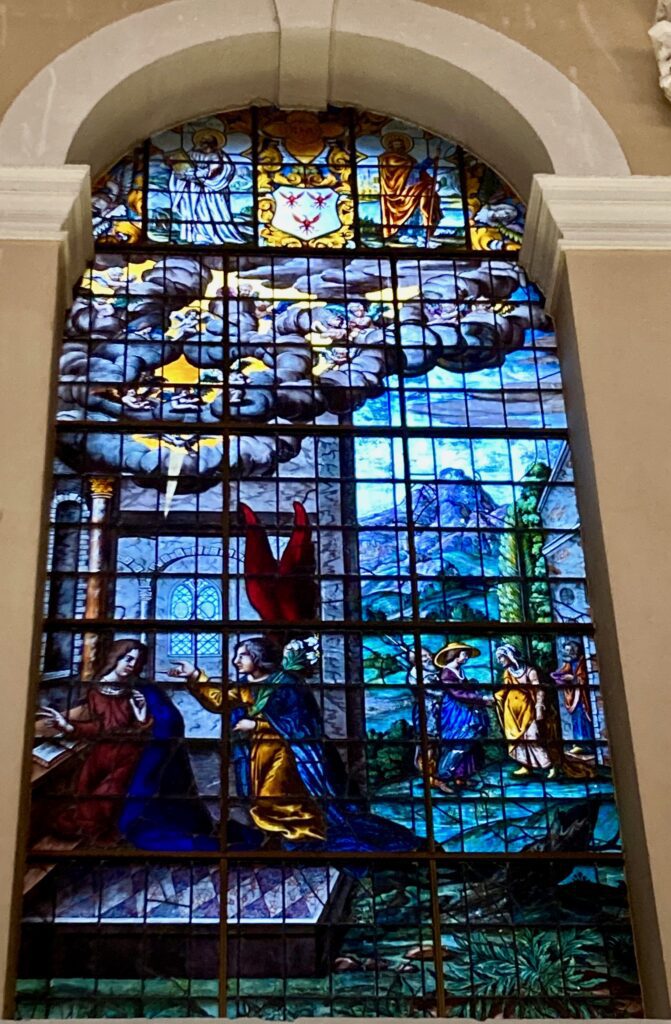
Incredible colours in the window in The Queens College chapel showing the Annunciation scene. Angel Gabriel is portrayed with wonderful red wings.
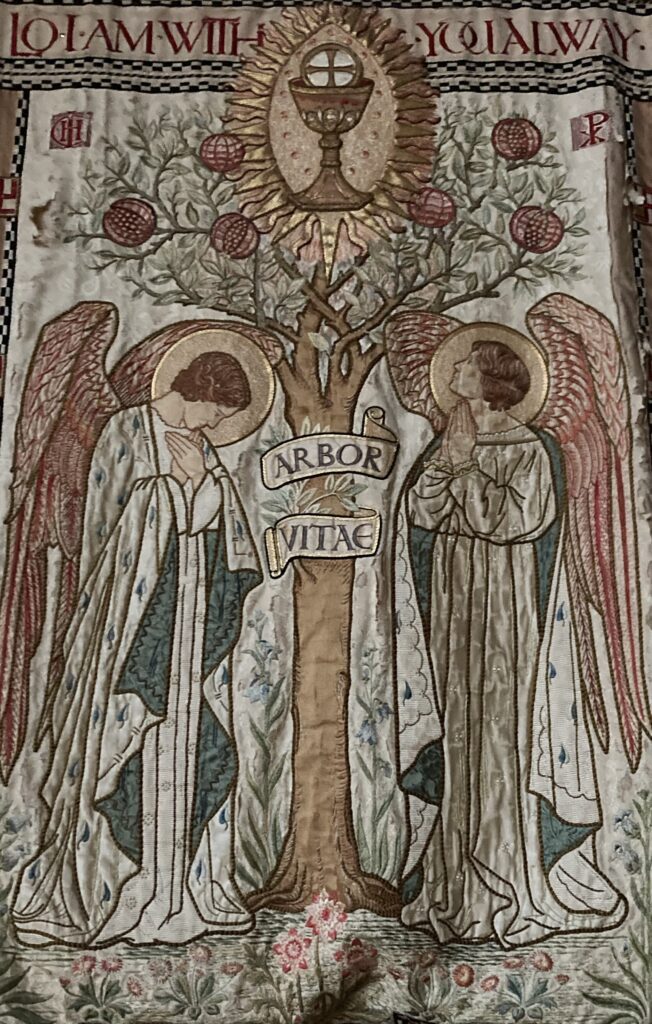
A banner showing the tree of life from the Church of St Barnabas
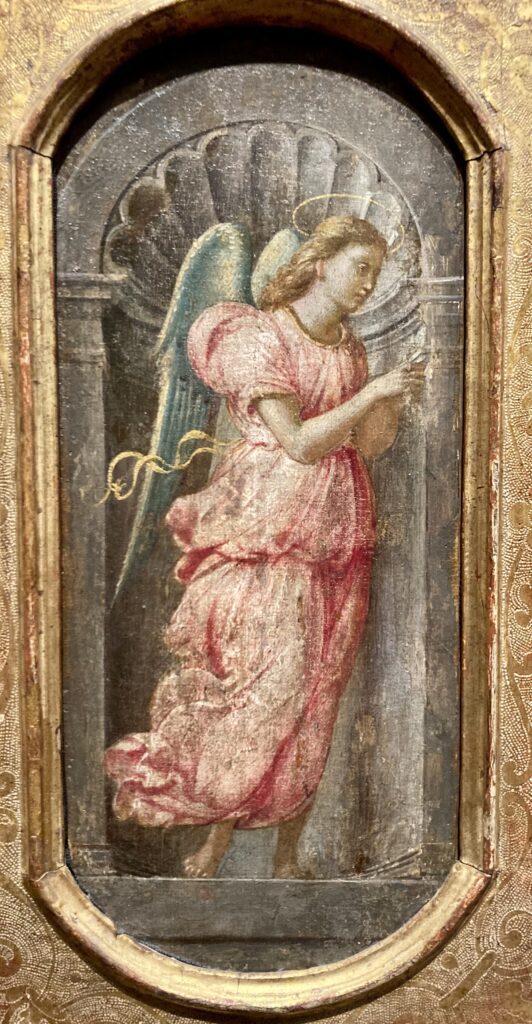
An Angel by Francesco Granacci (1469 – 1543) from The Ashmolean Collection. This is a fragment from an altar-piece.

This angel sits above the door to the Oxford University Museum of Natural History, opened in 1860. The stone figure by the O’Shea brothers holds a bible in its right hand and a dividing cell in its left. This was about the time of Darwin’s ‘Origin of Species’ when new scientific discoveries were beginning to challenge the old ideas of religion.
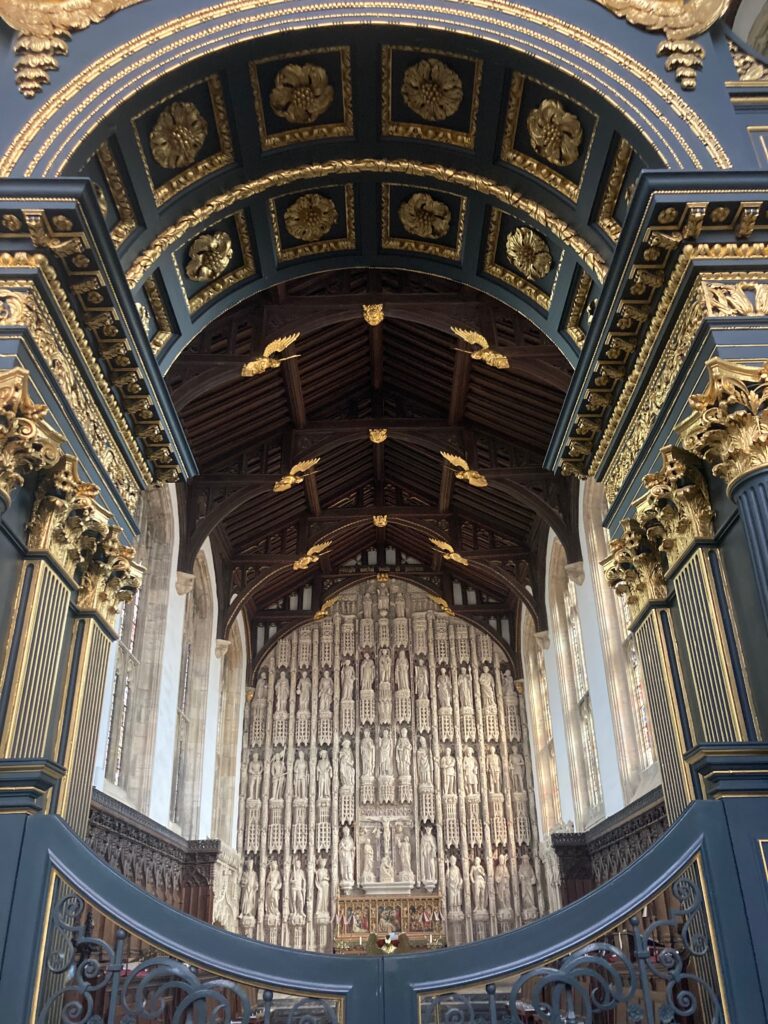
Golden angels look down from the ceiling at All Souls Chapel.
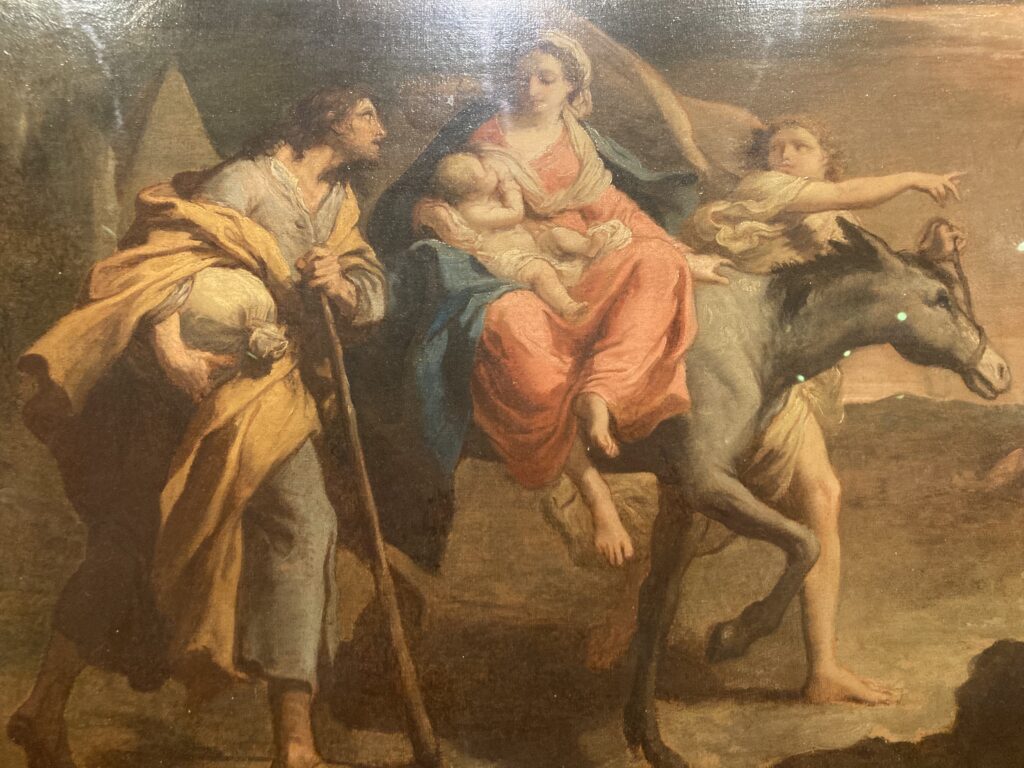
The Flight into Egypt by Gaetano Gandolfi (1734-1802) from The Ashmolean Collection. Here the angel plays guide to Mary, Joseph and the baby Jesus as they flee to Egypt, after Herod has announced a massacre of all new born boys.
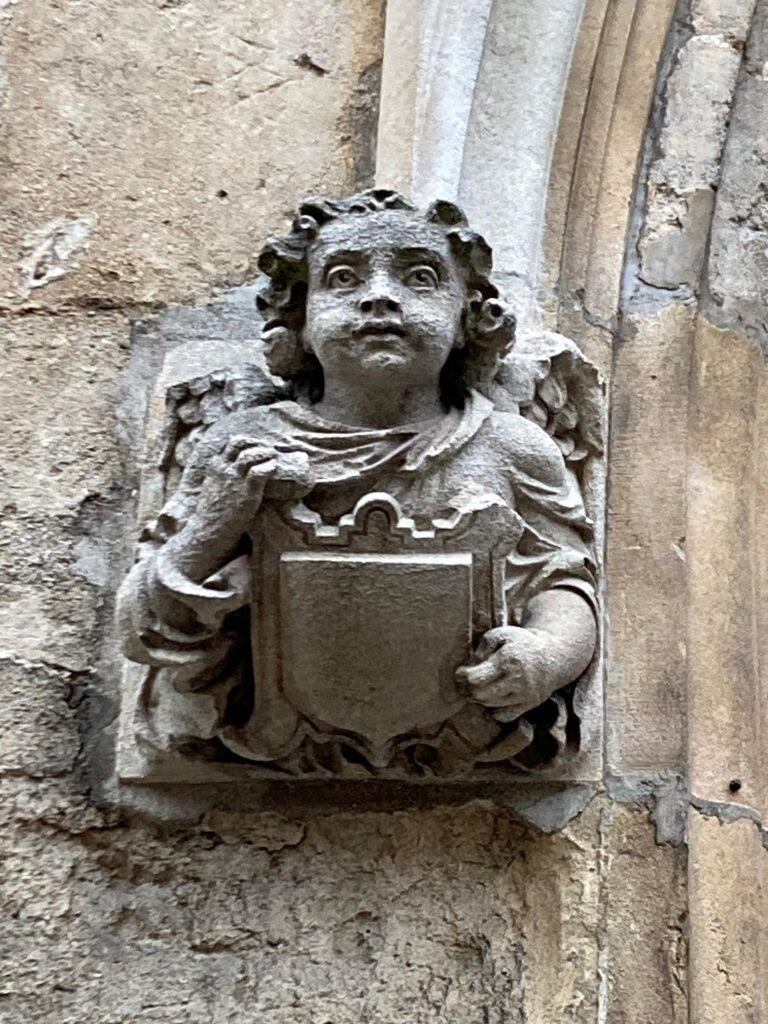
Stone angel at the gate of The Bodleian Library
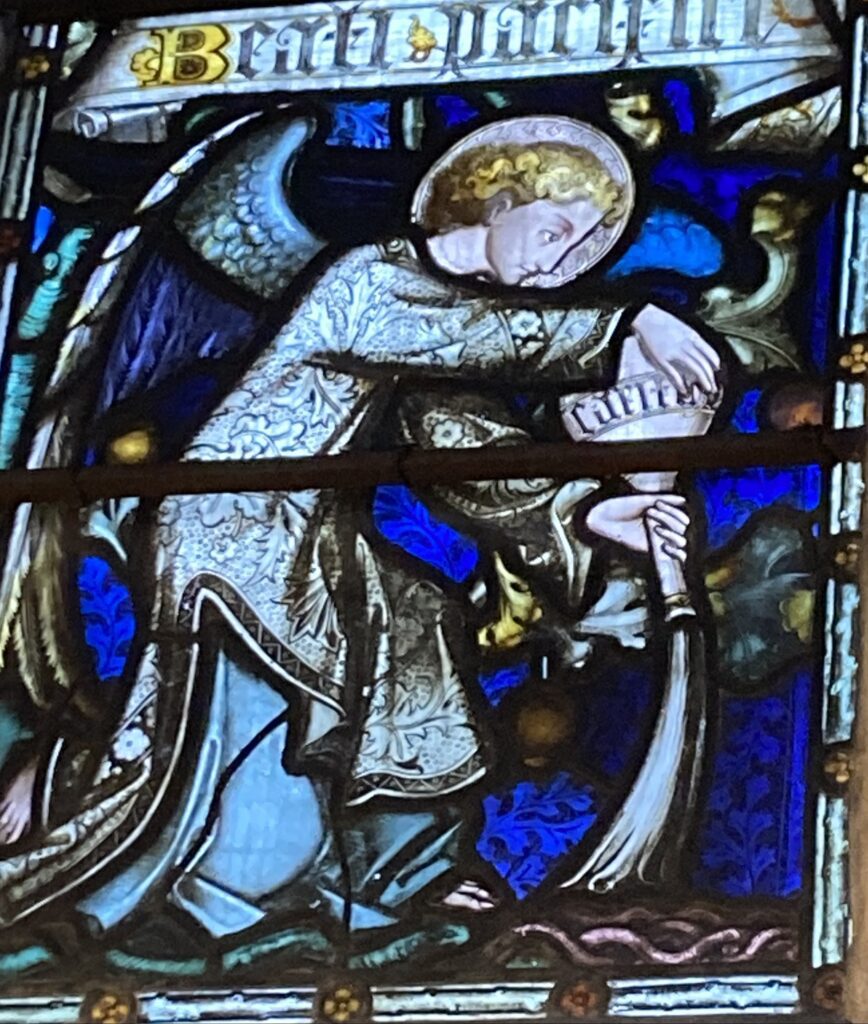
From the Marriot window in the University Church of St Mary the Virgin made by Hardman and Company in the 1860s. It was completed after a small pox epidemic in Oxford and the angel is pouring water symbolising purity, life and hope.
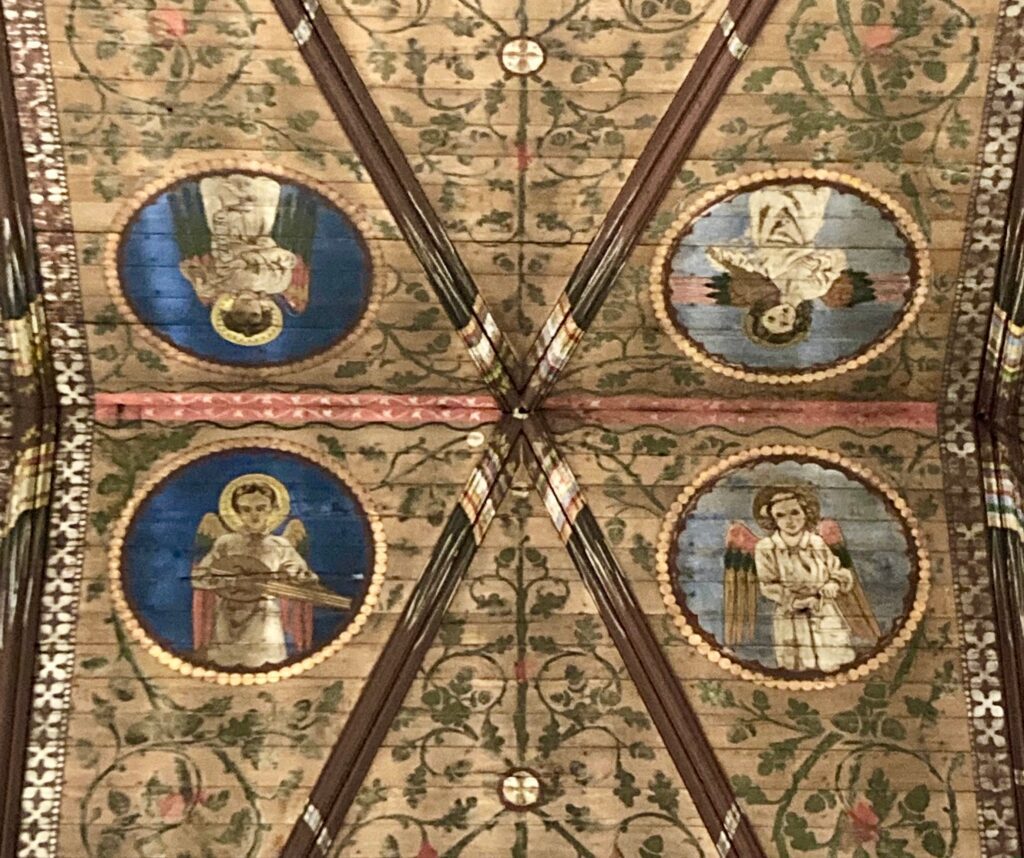
These beautiful musical angels are painted on the ceiling of Merton College chapel.
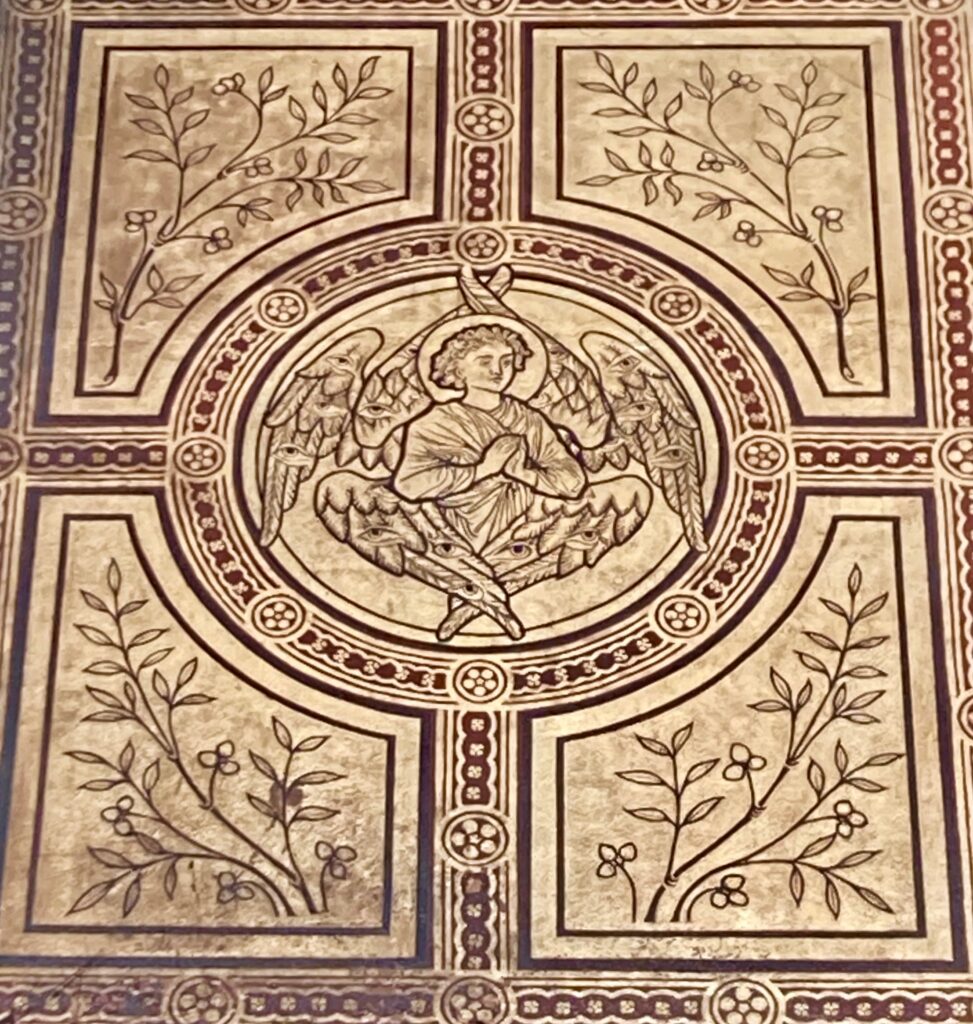
Another angel from the Church of St Barnabas where the wings are covered in eyes. There are several explanations for this; to symbolise that God is watching over us, or maybe that they may have the ability to see into the future.
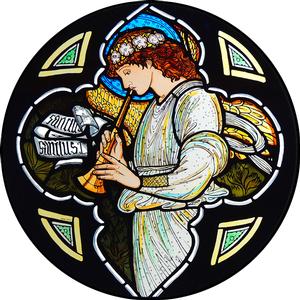
There are hosts of angels in Christ Church Cathedral – many of them playing musical instruments. Here is a detail from a window by Burne-Jones.
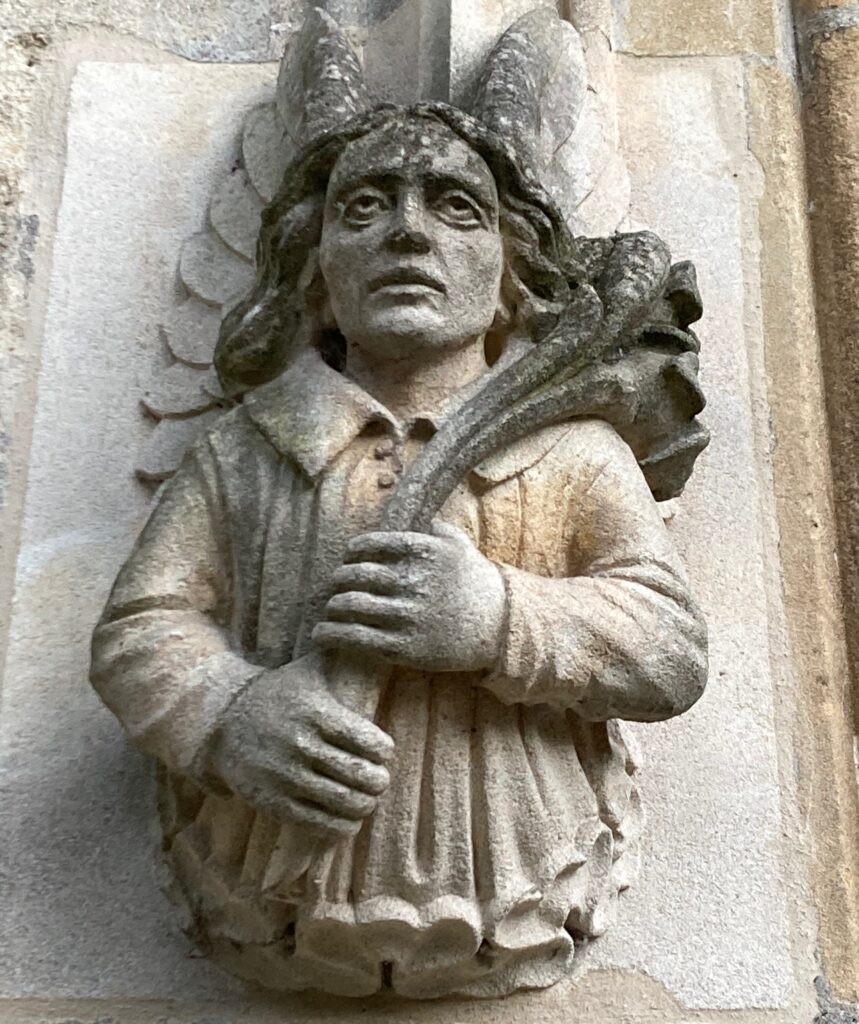
This stone carving graces St John’s Quad at Magdalen College.
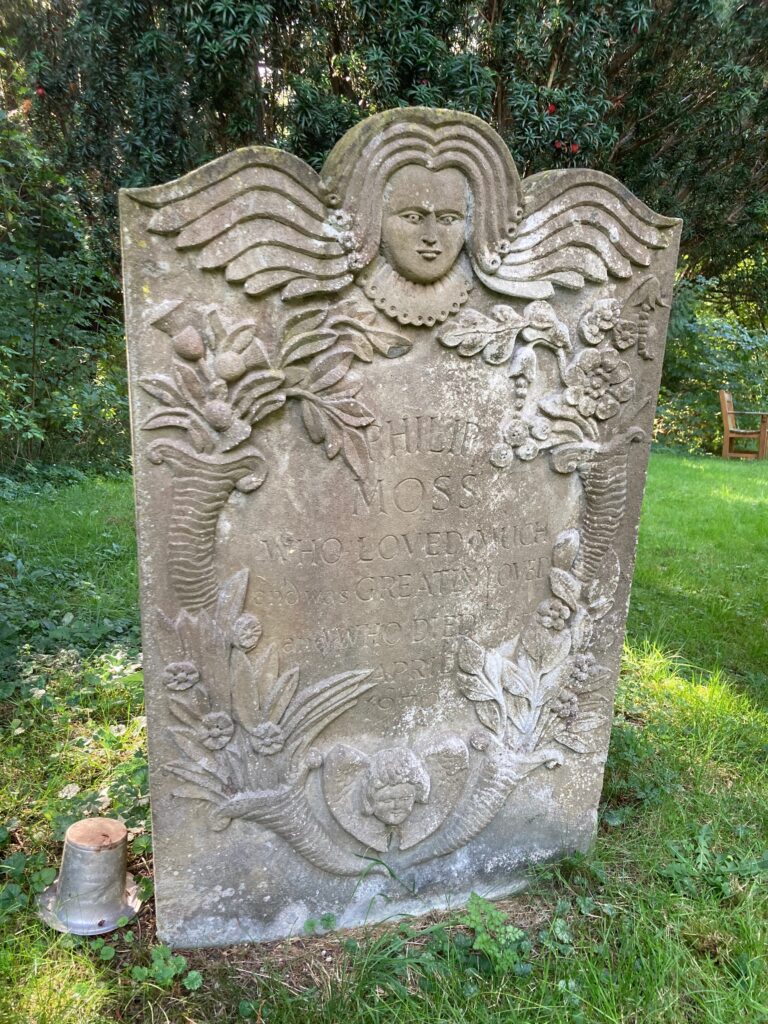
Angels on the headstone of Philip Moss in the churchyard of St Margaret’s Church in Binsey. Angels are often seen as intermediaries between the living and the dead.
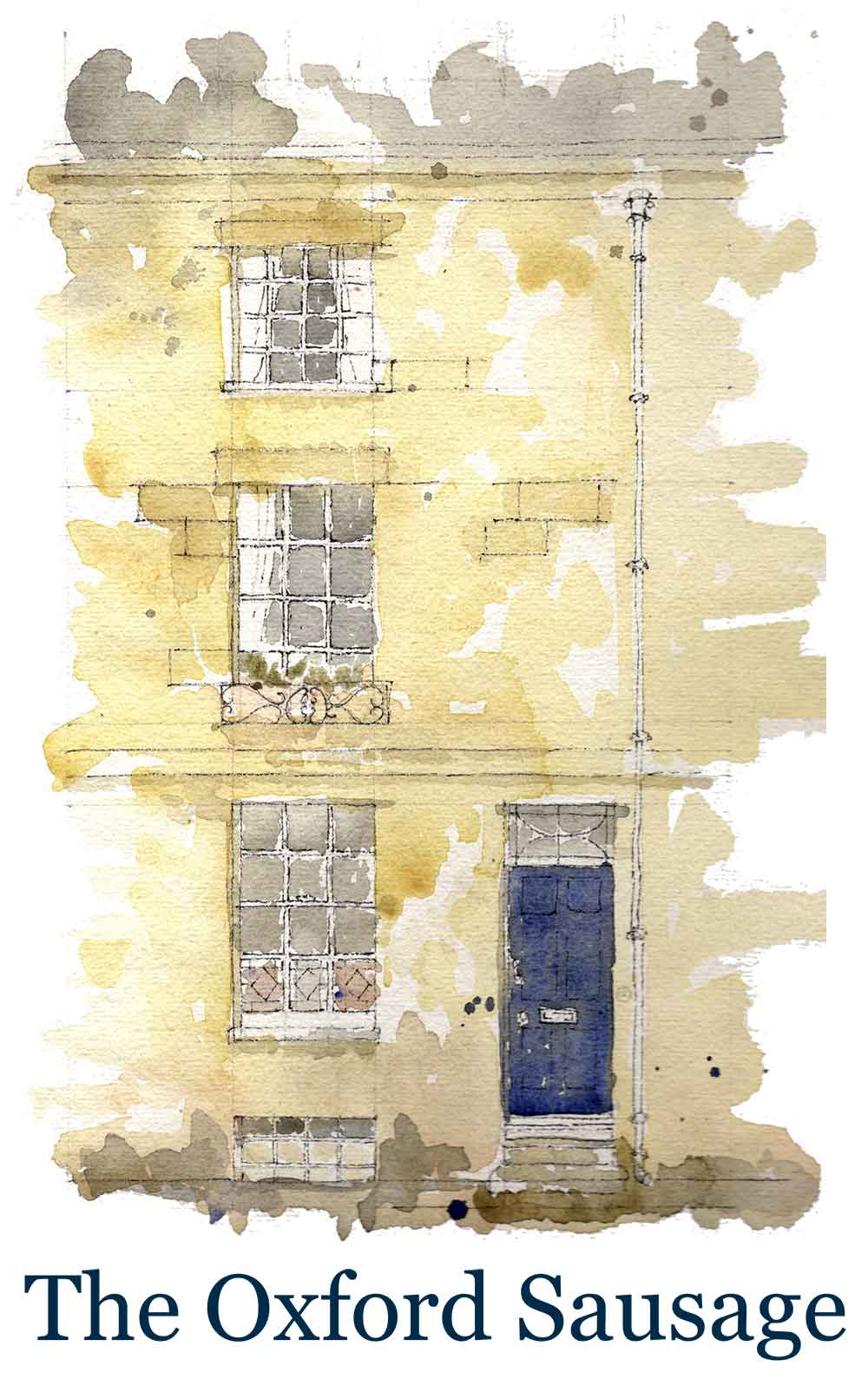
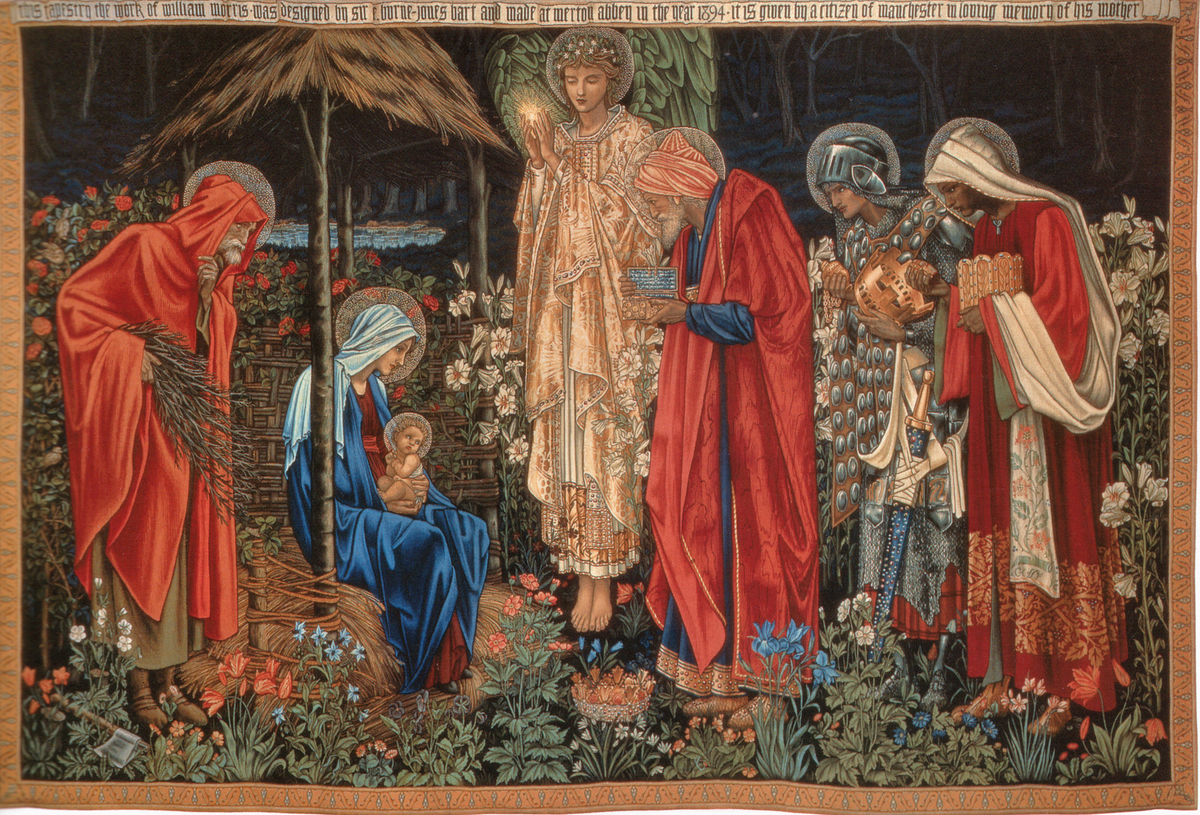
5 Comments
Join the discussion and tell us your opinion.
What a perfect piece to read on Christmas Eve.
Beautiful photographs and as always full of interesting details and fascinating facts!
Beautiful photographs to keep in mind while walking through the city. I love the colours of the tapestry and the new college stained glass and feathered statue, as well as your sketched card. My favourite place to watch angels from is through the stained glass windows of Magdalen College Chapel.
Thank you Arabella! I’ve really enjoyed reading the Oxford Sausage this year 🙂
I am particularly interested by the story of Tobias and the angel, so pleased to see that story – the origin of Raphael’s name – coming up a few times in the pictures, including your own painting!
I didn’t know Raphael meant ‘healing’ very apt for the story. Thank you
An enJOYable TOS post for the Holiday Season. A well written story, supported by good quality photos is a winning blog post formula! ‘ In the fullness of time’ (a Nigel Hawthorne line from YES MINISTER), my wife and I have learned that we have a ‘higher’ self to connect to, simply by ‘intending’ to make the connection. It is ourselves, on a higher dimensional & frequency level, and always communicates on the right-hand side of the head. This notion has intrigued us, and we like make it work for us in a happy, healthy manner, in keeping with our personal highest good. Cheers
MERRY EVERYTHING and A HAPPY ALWAYS ! (from text on a shopfront window, in English, in Tolouse France).
PS: What’s story about West Gate, and is it true that it named the multi-national shopping centre compnay WESTGATE? Ta …